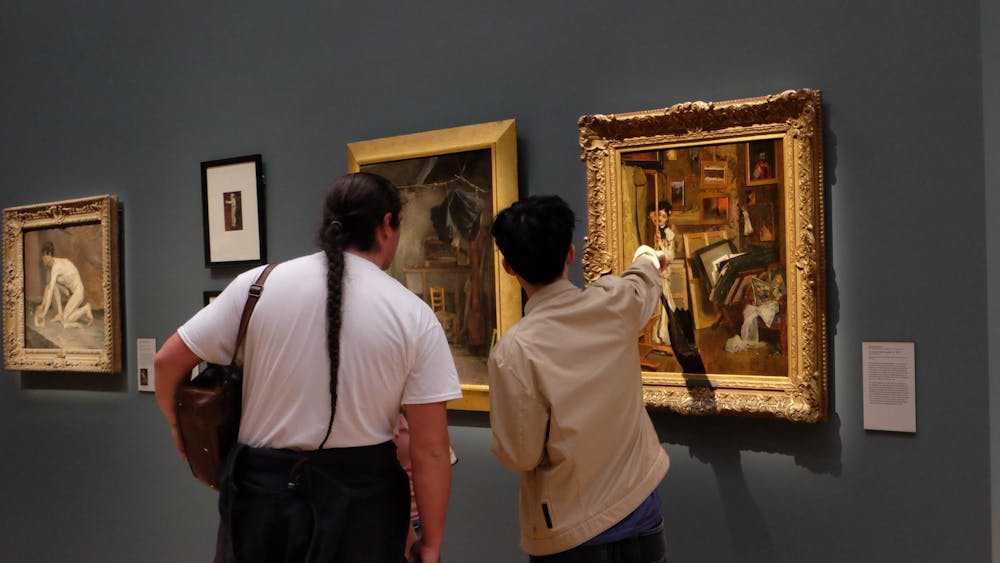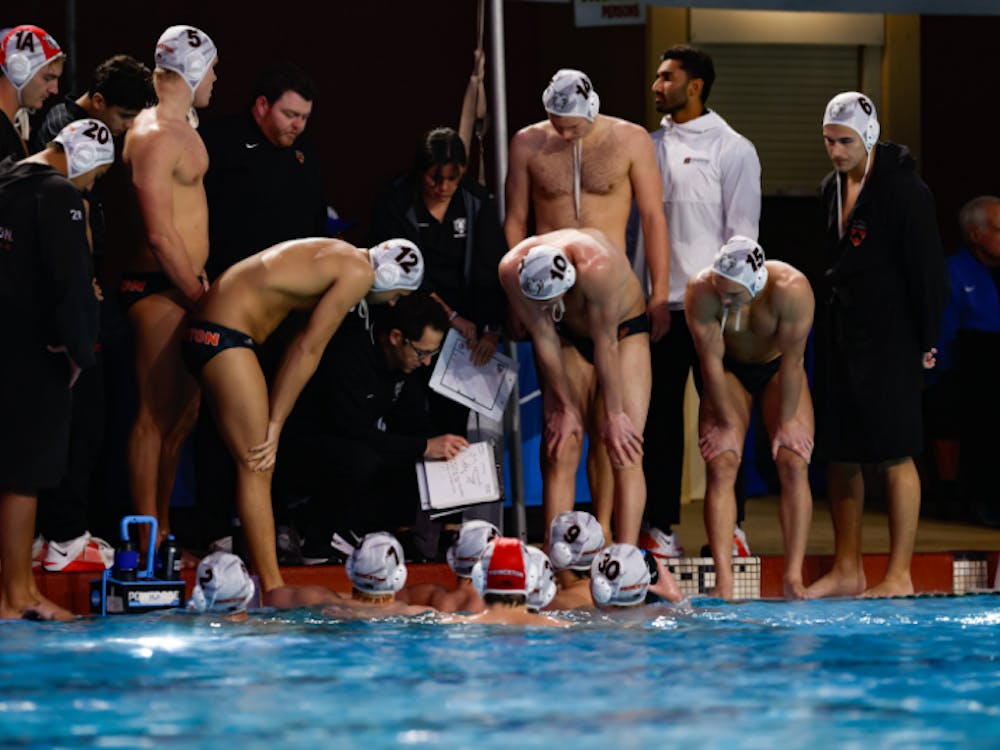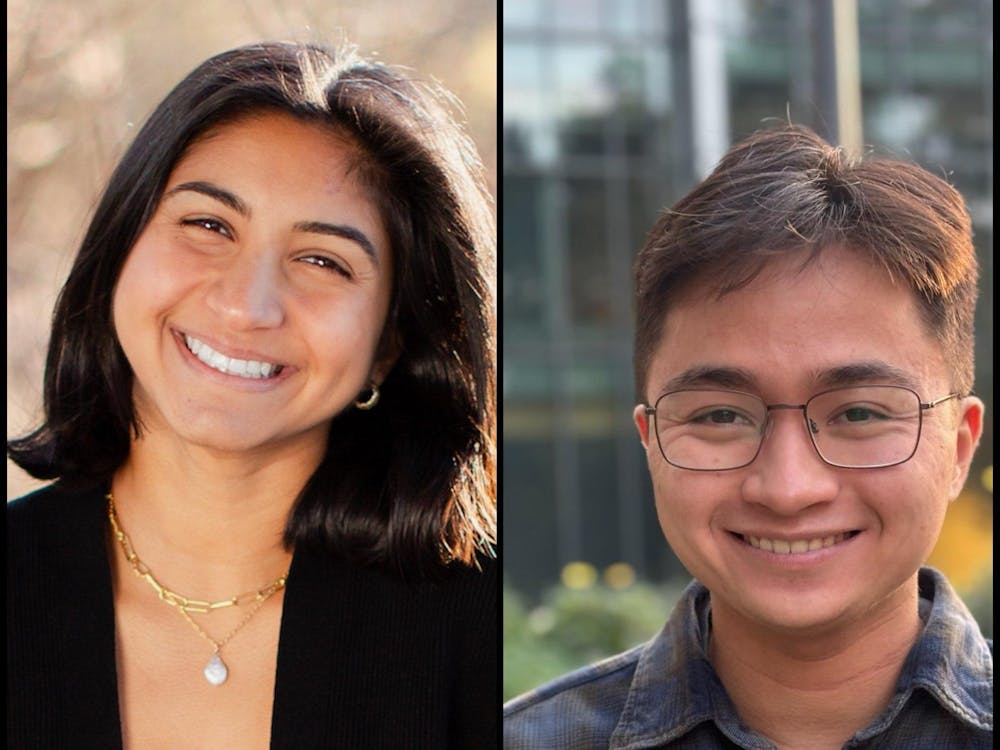In an evening featuring music, mocktails, and movies, students received an exclusive first look inside the Princeton University Art Museum (PUAM) on Saturday, Oct. 25.
The preview, which ran from 7 p.m. to 11 p.m., drew an estimated 3,000 attendees and featured Grammy-winning producer Jazzy Jeff as its headliner, alongside performances from student groups. Many students expressed that PUAM was significantly more impressive than anticipated, and that they plan on returning for the official 24-hour opening on Oct. 31.
“[PUAM] actually exceeded my expectations. I think the architecture is really beautiful,” Corinne Jordan ’27 told The Daily Princetonian. “I am definitely coming back — it seems like a lovely place to study, or just hang out.”
“I’m absolutely coming back,” Stephanie Ko ’28 told the ‘Prince.’
“We forget, on the day-to-day, where we are and what kind of institution Princeton is — we get bogged down by our classwork and stuff,” Ko said. “But when we get the chance to slow down and look around, it’s very exciting to see the things that we have access to.”
Julianne Somar ’26, an Architecture major, said that “the initial walk-in was quite magnificent. Being able to see what finally has been revealed and unfolded and seeing the grandeur of the space is really, really nice to take in.”
Seven of the nine pavilions within the museum are only partially walled off to the ceiling, creating open galleries. This open space is intended to “awaken a sense of discovery,” PUAM director James Steward said.
“There’s no path we’re telling you you have to take, there’s no sequence,” Steward told the ‘Prince.’ He said that museum-goers are able to discover cultures as they please.

Megan Kang GS said that she was “awestruck” by both the museum’s architecture, and described the curation of the art on display as “very playful and very surprising.”
“One of the first pieces I saw was [a] Rothko next to [an] indigenous painting,” she said. “The curation of old and new is really unique, and something you don’t see in a lot of museums.”
Amelia Melendez ’28 said that once she stepped inside, she was enthralled. “It’s like everything catches your eye ... [there’s] so much information and so many stories.”
PUAM is not only spatially non-traditional, but also visually unorthodox. Its sprawling modern facade stands out compared to its 19th-century neighboring buildings. The building has garnered criticism from students for its hulking stone design and tendency during construction to block the fastest paths across campus.

“I must admit, it was very annoying with the construction blocking all the routes [to class], freshman, sophomore, junior year, [and] part of senior year,” Joyce Chan ’26 said. However, after visiting the museum, Chan felt it was worth the wait. “I wasn’t expecting to see all these rare art pieces on display.” she said.
Students also appreciated the broad range of art showcased in the museum, with collections dedicated to European, Asian, Middle Eastern, and American, among others. The collections also range across different mediums, including pottery, mosaics, landscapes, furniture, and sculpture.
Sophie Gao ’28 highlighted how parts of PUAM art directly related to the rich history of both the city of Princeton and Princeton University itself, providing a grounded perspective that sets the PUAM apart. Charles Wilson Peale’s “George Washington at the Battle of Princeton,” for one, sits at the entrance to the American Art pavilion and was installed in Nassau Hall for over two centuries.
“You realize where Princeton was situated in the context of [American history],” Gao told the ‘Prince.’
Throughout the night, PUAM hosted film screenings of “Night at the Museum” (2006) and its sequel alongside live performances from slam-poetry group Songline, eXpressions Dance Company, improv group Quipfire! and Princeton University Ballet. TigerTale also released a limited-edition pin featuring the art museum building designed by Kellen Ducey ’26.
Luke Reudelhuber ’29, who was working for the event planning company Rafanelli, was in charge of overseeing a puzzle activity featuring paintings in the gallery.
“Tons of people are getting roped in and absorbed into the activity, so [they’re] appreciating the art in [another] way,” he said.
Unlike Reudelhuber, Officer Simon Sosa, one of the many cultural properties officers who will be working at the museum, didn’t expect to spend his nights at an art museum. “When I came to Princeton as a PSafe officer, I wanted to be more like a police officer,” he said.
“You try to make it fun,” Sosa said. “I like to look at the artwork. Sometimes, if I’m standing for too long, I’ll go read the descriptions.”
The museum will host a 24-hour opening event from 5 p.m. on Oct. 31 to 5 p.m. on Nov. 1, which will be open to members of the larger Princeton community as well as students. Many of the attendees at Saturday’s event planned to return to the grand opening.
Reudelhuber also looked forward to the opportunity to return to the museum as a student rather than an employee. “I’ll get to sort of experience all the levels [and] all the different displays,” he said.
“I feel like the vibe here tonight is really good, but I think next weekend it’ll be even better,” Laura Green ’29 said. “I think the community will want to see it too. It’s a great museum.”
Leela Hensler is a staff News writer and a staff Sports writer for the ‘Prince.’ She is from Berkeley, Calif. and can be reached at leela[at]princeton.edu.
Emily Chien is a News contributor for the ‘Prince.’ She is from Arcadia, Calif., and can be reached at emilychien@princeton.edu.
Sena Chang is a senior News writer for the ‘Prince.’ She typically covers campus and community activism, the state of higher education, and alumni news.
Please send any corrections to corrections[at]dailyprincetonian.com.








